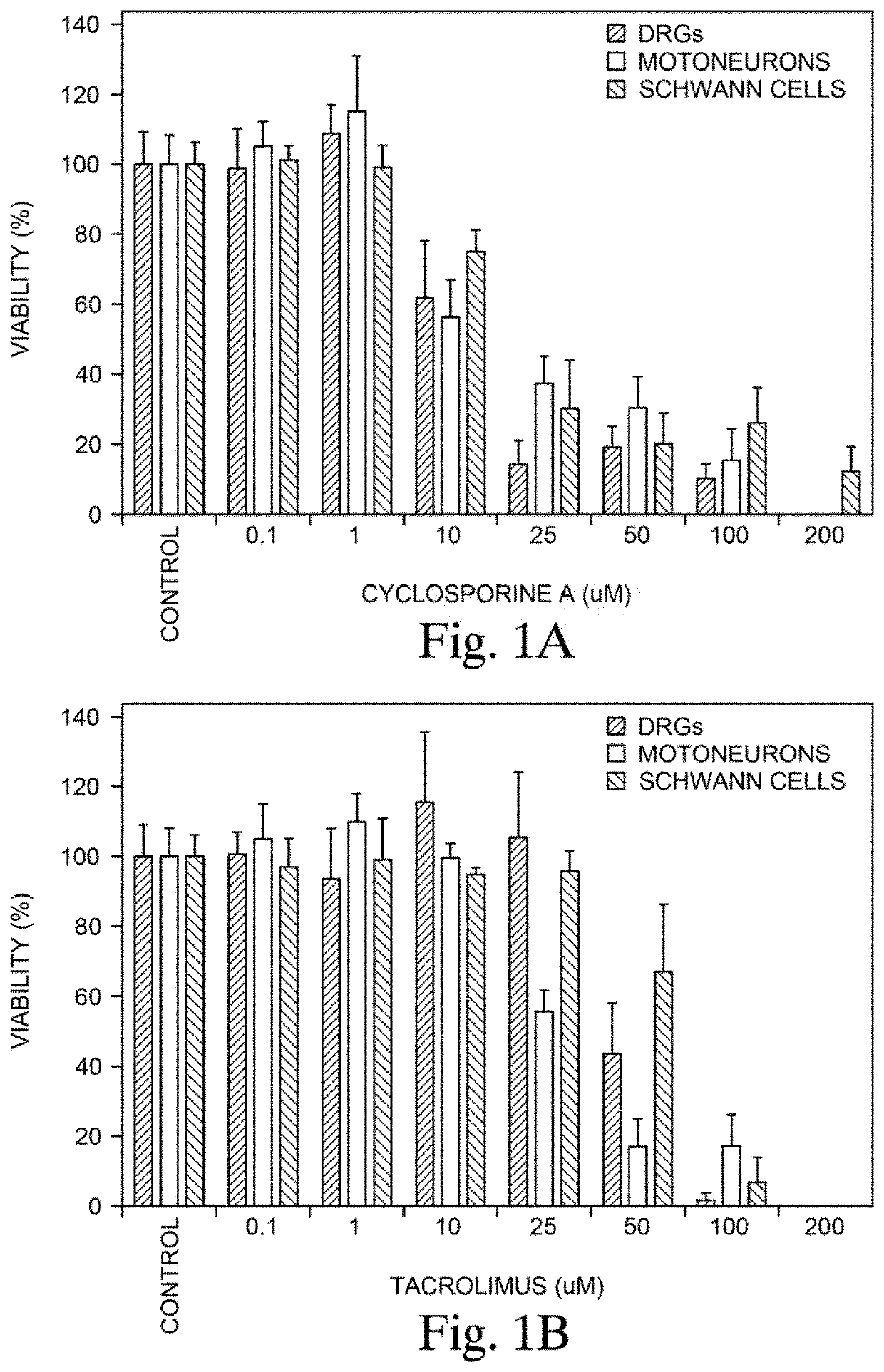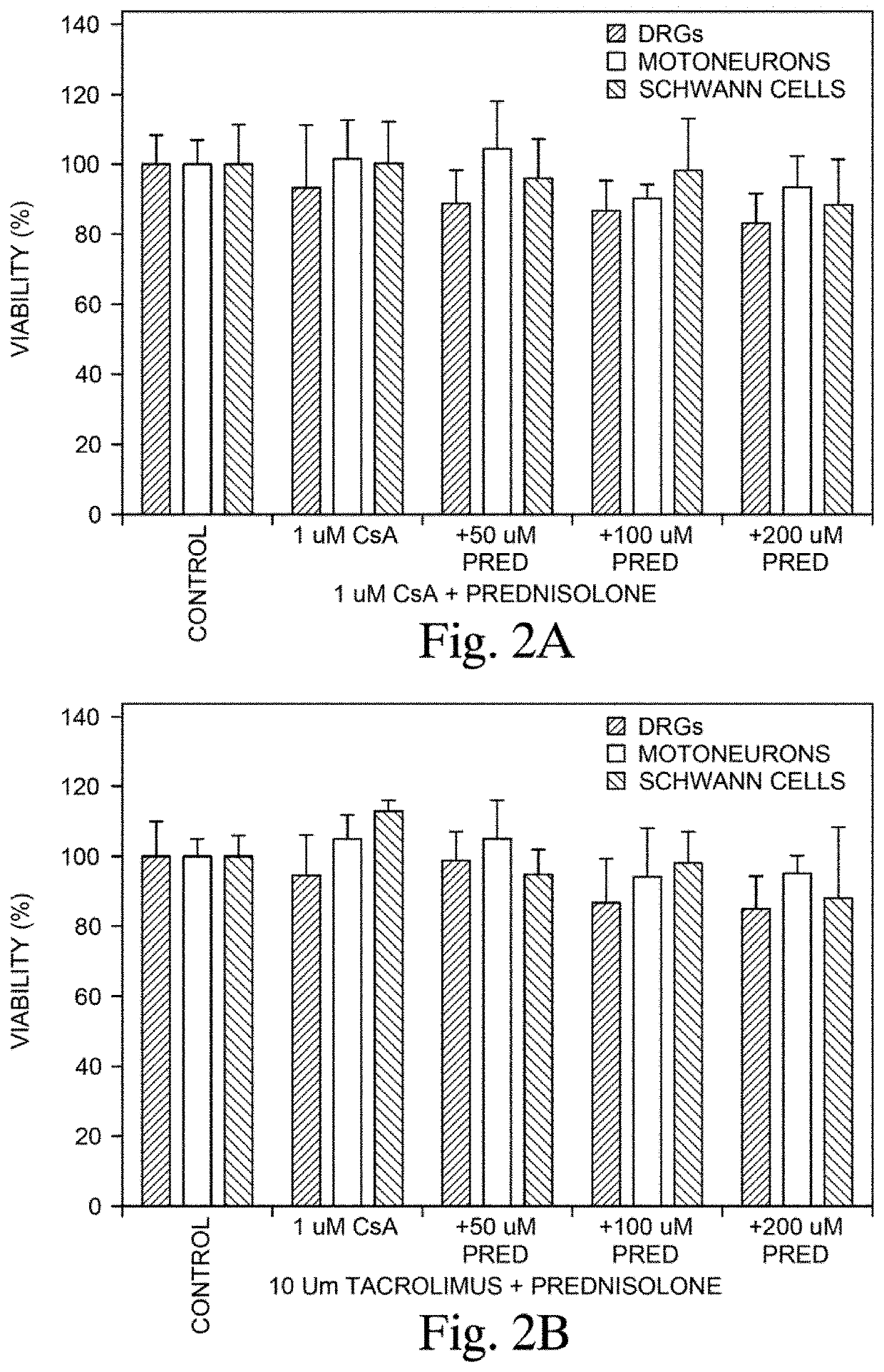Methods and materials for immunomodulation of tissue grafts
a tissue graft and immunomodulation technology, applied in the direction of prosthesis, nanocapsules, capsule delivery, etc., can solve the problems of neuromas, pn autografts suffer from a limited supply of correctly sized nerves, and inability to carry out pn autografts
- Summary
- Abstract
- Description
- Claims
- Application Information
AI Technical Summary
Benefits of technology
Problems solved by technology
Method used
Image
Examples
Embodiment Construction
[0043]Embodiments described herein relate to restorative solutions for segmental peripheral nerve (PN) defects using allografted PNs for stimulating PN repair. More specifically, embodiments described herein provide for localized immunosuppression (LIS) surrounding PN allografts as an alternative to systemically suppressing a patient's entire immune system. Methods include localized release of immunosuppressive (ISV) agents are contemplated in one embodiment. Methods also include localized application of immunosuppressive (ISV) regulatory T-cells (Tregs) in other embodiments. Hydrogel carrier materials for delivery of ISV agents and are also described herein.
[0044]Localized immunosuppression is defined herein as delivering immunosuppressive agents in the local environment of a peripheral nerve allograft, thereby eliminating or minimizing the utilization of immunosuppressive agents for systemic delivery following implantation of a peripheral nerve allograft to treat a segmental perip...
PUM
| Property | Measurement | Unit |
|---|---|---|
| Diameter | aaaaa | aaaaa |
| Diameter | aaaaa | aaaaa |
| Volume | aaaaa | aaaaa |
Abstract
Description
Claims
Application Information
 Login to View More
Login to View More - R&D
- Intellectual Property
- Life Sciences
- Materials
- Tech Scout
- Unparalleled Data Quality
- Higher Quality Content
- 60% Fewer Hallucinations
Browse by: Latest US Patents, China's latest patents, Technical Efficacy Thesaurus, Application Domain, Technology Topic, Popular Technical Reports.
© 2025 PatSnap. All rights reserved.Legal|Privacy policy|Modern Slavery Act Transparency Statement|Sitemap|About US| Contact US: help@patsnap.com



